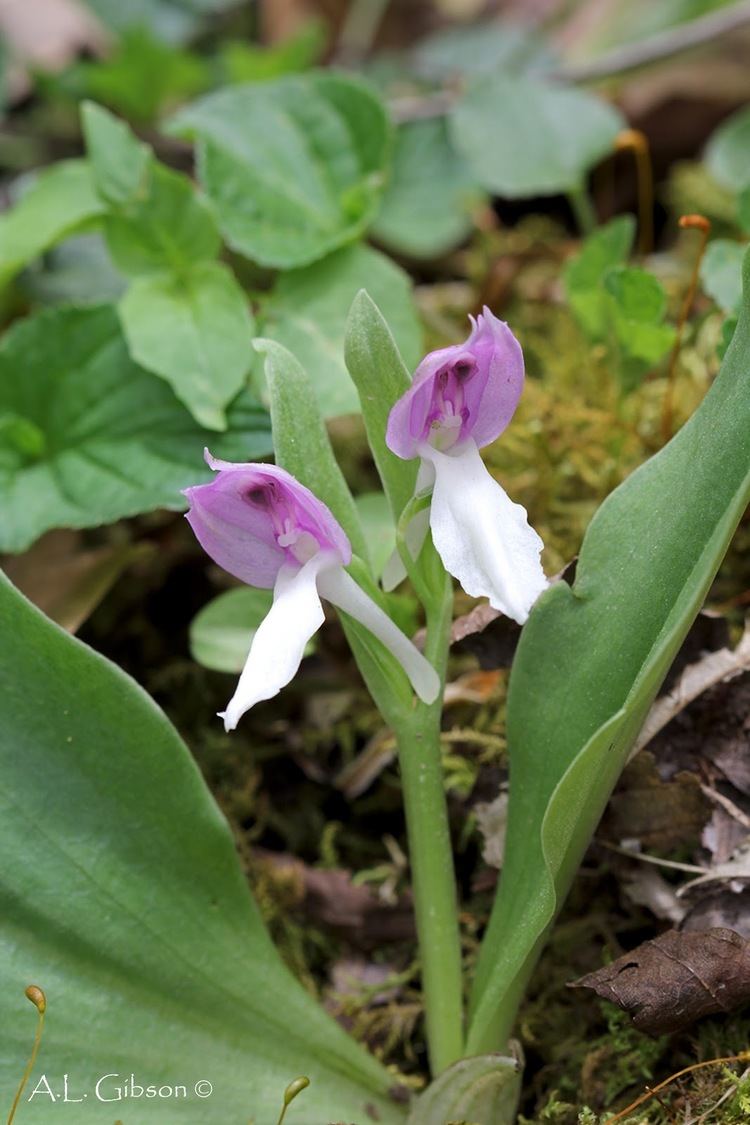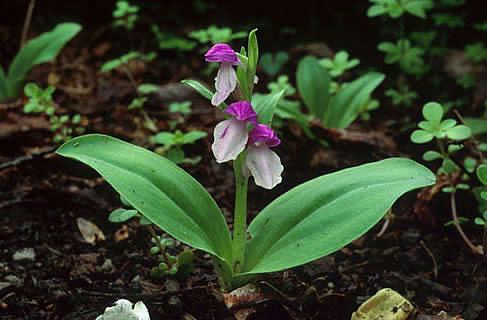Family Orchidaceae | Scientific name Galearis spectabilis Rank Species | |
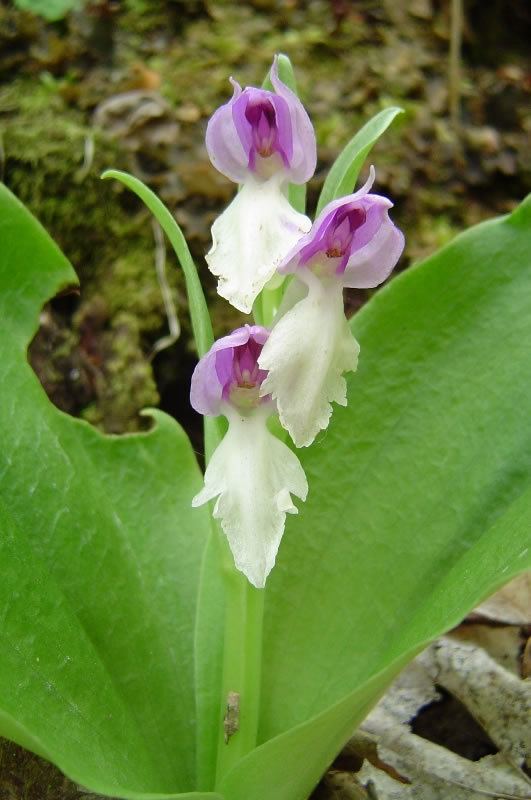 | ||
Similar Galearis, Orchids, Cypripedium acaule, Cypripedium parviflorum, Aplectrum hyemale | ||
Plant portrait showy orchis galearis spectabilis
Galearis spectabilis (gay orchis, purple orchis, purple-hooded orchis, and showy orchis) is an orchid species of the genus Galearis. It is native to eastern Canada (Quebec, Ontario and New Brunswick) and much of the eastern half of the United States (from southeastern Oklahoma east to eastern South Dakota and north to Maine and Minnesota).
Contents
- Plant portrait showy orchis galearis spectabilis
- Galearis spectabilis showy orchis
- Description
- References
Galearis spectabilis showy orchis
Description
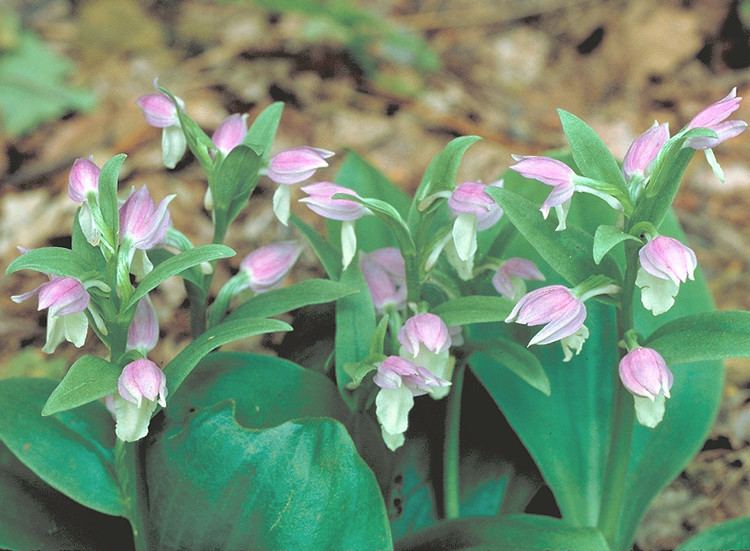
Galearis spectabilis can be found in eastern mesic deciduous woodlands. G. spectabilis begins growth in spring, producing one to two oval, fleshy basal leaves from a rhizome, which persist throughout summer. Flower stalks arise on 10–15 cm stems with anywhere from 3 to 12 flowers blooming in April to May. The flowers are hooded and the namesake of the plant due to the showy, typically bicolored lavender and white flowers. The lavender hood is formed from three fused sepals. Two petals are tucked inside the hood and the labellum (third petal) is longer and white. Plants are slow growing and will form clumps over time via crown offshoots from the rhizome.
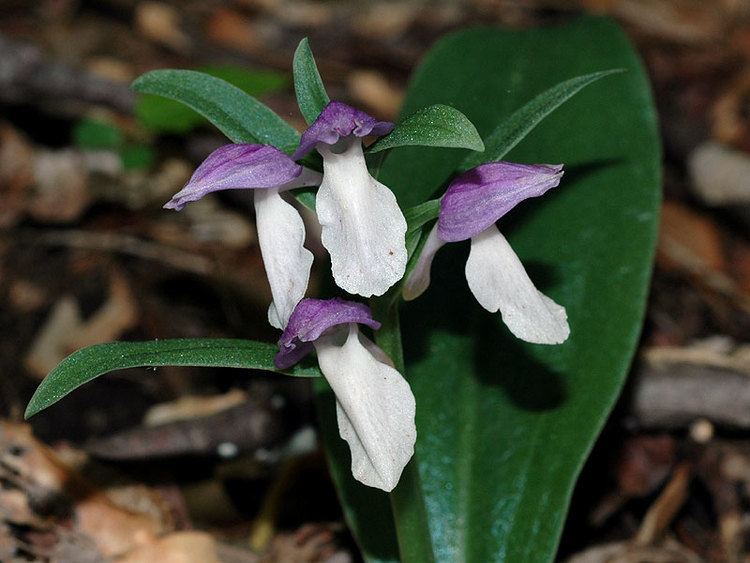
Pollination of the flower is conducted by long tongued Bombus, other bees, butterflies and moths. Besides it alluring colors, G. spectabilis flowers also provide pollinators a nectar reward which collects at the base of the spur. G. spectabilis is typically found on hillsides which may be rocky, damp and near seeps growing under a canopy of deciduous trees in half to deep shade. Interestingly, plants have also been reported to be found thriving living just about a floodplain, again under a deciduous canopy. Plants are rarely seen in full sun.
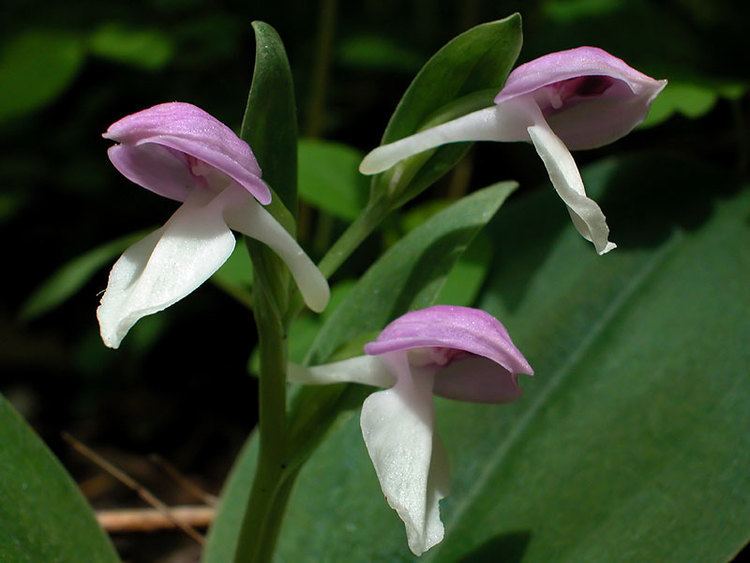
There are two color variants of this plant. One is G. spectabilis f. gordinierii which has an all-white flower, the other G. spectabilis f. willeyi with an entirely pink flower.
